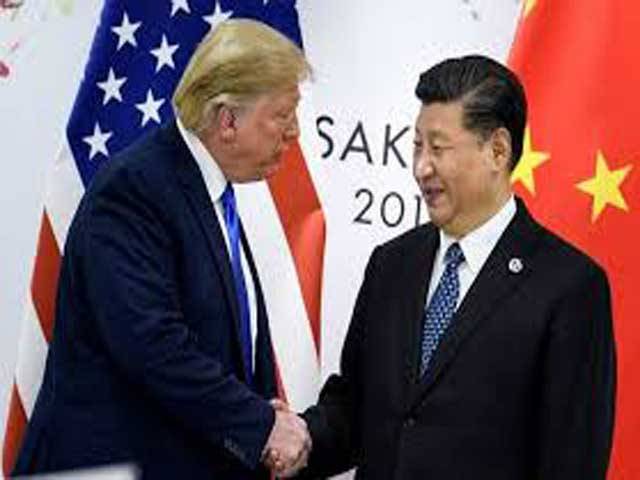PALM BEACH/Beijing/Shangai - U.S. President Donald Trump said on Tuesday he and Chinese President Xi Jinping will have a signing ceremony to sign the first phase of the U.S.-China trade deal agreed to this month.
“We will be having a signing ceremony, yes,” Trump told reporters. “We will ultimately, yes, when we get together. And we’ll be having a quicker signing because we want to get it done. The deal is done, it’s just being translated right now.”
United States Trade Representative Robert Lighthizer said on Dec. 13 that representatives from both countries would sign the Phase 1 trade deal agreement in the first week of January.
Speaking in Beijing on Wednesday, Chinese Foreign Ministry spokesman Geng Shuang said both countries were in close contact.
“Both sides’ economic and trade teams are in close communication about detailed arrangements for the deal’s signing and other follow-up work,” Geng told a daily news briefing.
He did not elaborate.
Beijing has not yet confirmed specific components of the deal that were released by U.S. officials. A spokesman for China’s Commerce Ministry said last week the details would be made public after the official signing.
Meanwhile, China’s November soybean purchases from the United States surged from a year earlier, data showed on Wednesday, as cargoes booked by importers with tariff-free quotas cleared customs.
China brought in 2.56 million tonnes of U.S. soybeans, up from zero a year ago and 1.147 million tonnes in October, after Beijing issued waivers to exempt importers from hefty tariffs for some American cargoes.
Shipments of U.S. soybeans plunged in the same month last year as buyers stayed clear of the U.S. market after Beijing slapped hefty tariffs on a list of American goods including soybeans in a tit-for-tat trade war.
China resumed buying U.S. cargoes after the countries agreed to a truce in their trade war in December last year.
Crushers have made more rounds of purchases of U.S. beans in recent months after Beijing issued tariff-free quotas in a goodwill gesture to Washington. Also in November, China brought in 3.86 million tonnes of soybeans from Brazil, down 24% from 5.07 million tonnes in the same month last year.
U.S. soybeans usually dominate the market in the fourth quarter as the autumn harvest kicks in. Brazilian shipments were slightly up from last month’s 3.793 million tonnes, as buyers stocked up ahead of China’s Spring Festival holiday, a peak season for meat and oils.
China brings in soybeans to crush into cooking oil, and soymeal to feed its massive livestock sector. Demand for soybeans has been curbed by a severe African swine fever disease that has decimated China’s massive pig herd and left a huge gap in supply of its favourite meat.
However, China’s pig herd has started to recover in recent months, the government said, following a series of measures to boost production.
China’s exports of rare earth magnets to the United States fell 21.2% month-on-month, customs data showed on Wednesday, as improving trade relations between the two countries reduced demand for stockpiling.
U.S.-bound shipments of the magnets, which are widely used in medical devices, consumer electronics and defense, came in at 376 tonnes last month, according to data from the General Administration of Customs. The figure was also down 3.2% year-on-year.
The U.S. military plans to stockpile rare earth magnets used in Javelin missiles and F-35 fighter jets, according to a government document seen by Reuters, although a U.S. policy bill bans the purchase of rare earth magnets from China for military use in the 2019 fiscal year. China, the world’s top producer of rare earth magnets, raised in May the prospect of restricting the supply of rare earth products in its trade war with Washington.
It has since raised annual rare earth output quotas to record highs and agreed an initial deal to end the trade row, although its overall rare earth exports in November totaled only 2,636 tonnes, the lowest since May 2015, customs data released on Dec. 8 showed. China’s rare earth magnet exports to all countries came in at around 2,891 tonnes last month, down 6.5% from 3,091 tonnes in October and up 10.4% from November 2018.
The biggest export destination for the magnets was Germany, to which China sent 672 tonnes in November. In October, rare earth magnet exports to Germany had spiked to around 708 tonnes, the highest since at least 2016.b






